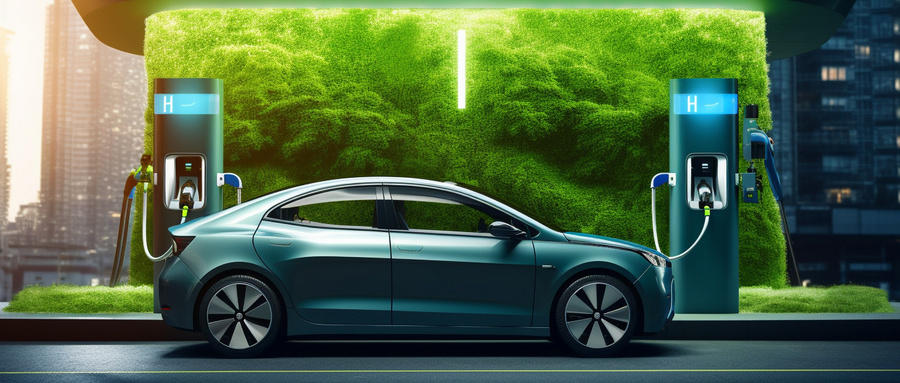
On July 21, the National Development and Reform Commission, the Ministry of Finance, the State Administration for Market Regulation and other departments issued “Several Measures on Promoting Automobile Consumption” (hereinafter referred to as “Measures”). The “Measures” require that the construction of supporting facilities for new energy vehicles be strengthened. Implement policies and measures such as building a high-quality charging infrastructure system and supporting new energy vehicles to go to the countryside.
Recently, as the production of new energy vehicles in China has reached the 20 million mark, the shipment of 650V-1200V silicon carbide MOSFETs for new energy vehicles developed by China Dianke Guoji Nanfang and 55 Institute has exceeded 12 million, achieving high-volume Stable supply.
From the above two news, it can be seen that, on the one hand, new energy vehicles have ushered in favorable policies, and will further develop rapidly under the promotion of new policies; on the other hand, silicon carbide (SiC) with new energy vehicles as the main application scenario ) devices, some domestic manufacturers have achieved stable supply. my country’s new energy automobile industry and silicon carbide industry are gradually forming conditions and entering a new situation of mutual achievement and mutual promotion.
In fact, since the emergence of silicon carbide devices, with the continuous deepening and expansion of its industrial chain, there have been voices in the industry asking: Will silicon carbide devices completely replace silicon-based IGBTs in the future? In general, IGBTs are the present, but SiC devices are the future.

At present, in the new energy vehicle industry, IGBT is still the most used and occupies the mainstream position. Compared with silicon-based power devices, silicon carbide power devices have the advantages of high temperature resistance (working temperature up to 600°C), high voltage resistance, high frequency resistance, smaller volume and higher energy efficiency. In terms of cost, silicon carbide devices are several times that of traditional silicon-based devices. The fierce competition in the automotive market has forced car companies to try their best to control production costs. Therefore, silicon carbide devices with excellent performance but high cost can replace some silicon-based devices, but they will not completely replace them in the short term. Complementary relationship.
For a long time, silicon carbide devices have been used in some high-end cars or high-end models with industrial grade and battery capacity to a certain extent. Although it will lead to an increase in vehicle manufacturing costs to a certain extent, it will also reduce the overall cost by improving battery efficiency, forming a cost-effective advantage. Guo Yuhui, chip planning director of Chery Automobile R&D Institute, once told the media that the industry consensus is that IGBTs for electric vehicles with a value of less than 200,000 yuan and silicon carbide power semiconductors for electric vehicles with a value of more than 200,000 yuan.

According to the data released by the Passenger Federation, in 2023, the proportion of new energy vehicles will increase from 1.2% in 2017 to 3.4% in 2023, in the range of 200,000-300,000 yuan. The first data increased from 8.5% to 17.5%. It can be seen that although the proportion of new energy vehicles in these two price ranges is small, the growth rate is very fast.
In recent years, the continuous increase in the penetration rate of new energy vehicles is a trend expected at both the policy level and the industry chain level, but its magnitude and speed are so large that it is indeed far beyond the original estimates. According to the “New Energy Vehicle Industry Development Plan (2021-2035)” issued by the Ministry of Industry and Information Technology in November 2020, the sales volume of new energy vehicles in my country is expected to reach 6 million in 2025. But in fact, in 2022, the production and sales of new energy vehicles in my country will reach 7.058 million and 6.887 million respectively. Ding Rongjun, an academician of the Chinese Academy of Engineering, recently predicted that the annual sales of new energy vehicles in China will reach 15 million in 2025. The development speed of new energy far exceeds expectations, which obviously has a huge role in promoting the prospect of silicon carbide devices “on the car”.
The overall proportion of new energy vehicles in the range of 200,000 to 300,000 yuan and above 400,000 yuan has continued to rise, and the overall base of new energy vehicles has surged beyond expectations. The result obtained by multiplying the two undoubtedly means that the application scope and The rapid expansion of the proportion. In addition, with the reduction of the cost of silicon carbide devices in the future, its application in the field of new energy vehicles will definitely extend to the low-price range, and the future market potential is self-evident.
In addition, according to the data of IHS Markit, a global business information service provider, driven by the huge demand of the new energy vehicle industry and the impact of the increase in efficiency and power consumption requirements in fields such as photovoltaic wind power and charging piles, it is estimated that by 2027, silicon carbide power devices The market size of the market will exceed 10 billion US dollars, and the compound growth rate from 2018 to 2027 will be close to 40%.
Based on China and looking at the world, we have reason to believe that the replacement speed and replacement ratio of silicon carbide devices will likely exceed expectations. Silicon carbide devices will not “dominate the world” in the short term, but in the long run, they will continue to advance in the direction of winning the future. The commercial layout of the supply chain can only win the future by being one step ahead.
